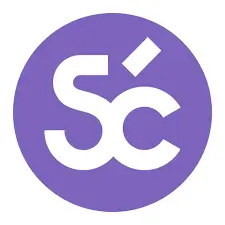
Introducing Smartcat AI Agents
Introducing Smartcat AI Agents — your digital teammates for global content
Jul 8, 2025

Brooke Starling
Most popular
Smartcat recommends
Subscribe to our newsletter
Learn what AI, GPT, and Automation Mean for Localization and Translation
Introducing Smartcat AI Agents
Jul 8, 2025

Brooke Starling
Smartcat Launches Expert-Enabled AI Agents To Transform Global Content Creation, Translation, and Automation
Jul 8, 2025

Smartcat
The Agentic Future of Work: How AI Agents Are Redefining Enterprise Productivity
Jul 3, 2025

Falk Gottlob
What Are AI Agents?
Jul 2, 2025

Nicole DiNicola
How To Translate A Website: Steps, Examples, Best Practices
Jun 28, 2025

Rosie Allabarton
How to AI Translate Word Document Content Quickly
Jun 27, 2025

Catherine Cohen
The Real-World ROI of AI for Enterprise Marketing
Jun 26, 2025

Alexandra Conza
How To Translate Audio with AI: Best Practices, Steps & Demo
Jun 23, 2025

Catherine Cohen
How To Use SEO Translation to Grow Global Traffic
Jun 23, 2025

Catherine Cohen
How to translate YouTube videos with AI
Jun 20, 2025

Catherine Cohen
From Course to Global Classroom in Minutes: Translate Rise 360 courses with Smartcat's Agent
Jun 20, 2025

Loie Favre
How to Translate an Image With AI
Jun 20, 2025

Catherine Cohen
The Big AI Mistake Every Company is Making
Jun 17, 2025

JD Dillon
Transforming manufacturing growth and efficiency with AI translation
Jun 13, 2025

Alexandra Conza
Translation Software in 2025: The Complete Guide
Jun 3, 2025

Loie Favre
Making work more human with AI
Jun 2, 2025
Stacey Richey
How to translate SCORM with AI
May 28, 2025

Loie Favre
How to translate a PowerPoint presentation to any language with AI
May 13, 2025

Loie Favre
What is an XLIFF file: A comprehensive guide for course creators
May 13, 2025

Loie Favre
How to dub a video with AI: a step-by-step guide
May 8, 2025

Loie Favre
Translate XLIFF: How to translate courses quickly and easily
May 7, 2025

Smartcat
Translate PDF to Spanish without losing formatting: step-by-step guide
May 1, 2025

Loie Favre
What is translation? Maximizing communication across languages
Apr 29, 2025

Loie Favre
Choosing the best translation website for your business
Apr 25, 2025

Loie Favre
How to choose the right LMS: A step-by-step guide
Apr 24, 2025

Loie Favre
Learning Management Systems: The Complete Guide for 2025
Apr 11, 2025

Loie Favre
Expanding global life sciences operations with AI-driven content generation and translation
Feb 25, 2025

Loie Favre
9 Best AI tools for business in 2025
Dec 16, 2024

Rosie Allabarton
The key to success in Japanese markets: Insights from Hubspot localization expert Satomi Shimizu
Dec 2, 2024

Loie Favre
Smartcat vs Crowdin AI platform comparison 2024
Nov 26, 2024

Smartcat
TMX files: How to streamline translations and localizations
Nov 20, 2024

Smartcat
Smartcat vs. Lokalise: Which is best for your enterprise in 2024?
Nov 12, 2024

Smartcat
Best website translation tools for your enterprise in 2024
Oct 21, 2024

Smartcat
Smartcat vs Smartling: The Ultimate Comparison 2024
Oct 21, 2024

Smartcat
Best Learning and Development Conferences in 2024 & 2025
Oct 16, 2024

Loie Favre
Are We AI There Yet? Insights from the Fireside Chat
Oct 15, 2024

Dr Markus Bernhardt
The complete eLearning content development guide
Oct 7, 2024

Rosie Allabarton
iOS app localization: A complete guide
Oct 7, 2024

Rosie Allabarton
Android app localization: Everything you need for global success
Oct 1, 2024

Smartcat
Translate screenshots using AI: How it's done
Oct 1, 2024

Rosie Allabarton
Introducing Our Latest Course: Create and Translate Learning Content with Smartcat AI
Sep 23, 2024

Loie Favre
Creating Accessible and Inclusive Video Courses: A Guide
Sep 16, 2024

Loie Favre
Top 10 eLearning Content Types And When To Use Them
Sep 15, 2024

Smartcat
AI in eLearning: Steps Towards Learning Excellence
Sep 13, 2024

Loie Favre
How to Make Training Videos More Engaging [Your Ultimate Guide]
Sep 12, 2024

Loie Favre
Translation glossary guide: a route to consistency & client trust
Sep 11, 2024

Smartcat
Smartcat Raises $43 Million Series C For Expansion of Enterprise Language AI
Sep 10, 2024

Smartcat
Add Translated Subtitles to Video: Here's How!
Sep 9, 2024

Smartcat
Course Creation Checklist: Your Guide to Launching an Internal Learning Course Successfully
Sep 6, 2024

Smartcat
How to Create a Video Course for Global Teams
Sep 6, 2024

Loie Favre
Localization trends: beat them to the punch before 2025
Sep 5, 2024

Loie Favre
How to Translate TikTok Videos in Your Business
Aug 28, 2024

Loie Favre
Elearning video production–a complete guide
Aug 27, 2024

Rosie Allabarton
Is dubbing AI safe to use in your business videos?
Aug 19, 2024

Smartcat
Gen AI in learning and development: A step-by-step guide in 3 key phases
Aug 5, 2024

Timothy Woods
8 elearning translation best practices
Jul 30, 2024

Rosie Allabarton
Multilingual content marketing: Everything you need to know
Jul 25, 2024

Rosie Allabarton
7 common elearning translation mistakes
Jul 24, 2024

Rosie Allabarton
Translate audio from a video automatically: Here's how
Jul 23, 2024

Smartcat
Translate scanned PDF: Easy steps and best practices
Jul 23, 2024

Timothy Woods
Localization testing – your ultimate step-by-step guide to excel
Jul 16, 2024

Rosie Allabarton
A step-by-step guide to create training materials
Jul 16, 2024

Rosie Allabarton
What Are Bilingual Files and How Do You Manage Them?
Jul 16, 2024

Timothy Woods
Best AI Dubbing Software: Top 10 Tools for Enterprises
Jul 11, 2024

Timothy Woods
Best Free Online Tools to Translate PDF Files
Jul 10, 2024

Timothy Woods
Mastering Transcreation: Elevate your brand's global appeal
Jul 5, 2024

Timothy Woods
Training Industry Recognizes Smartcat in 2024 Top AI in Training Companies List
Jun 27, 2024

Smartcat
SCORM file: What is it, pros, cons, and best practices
Jun 24, 2024

Smartcat
Revolutionizing Learning & Development with Smartcat AI for Learning Content
Jun 20, 2024

Smartcat
Smartcat's new AI Dubbing feature is key in your multimedia video success
Jun 19, 2024

Smartcat
ELearning Content Translation
Jun 12, 2024

Smartcat
How to detect AI-generated content
Jun 3, 2024

Rosie Allabarton
What is AI content moderation and how does it benefit businesses?
May 29, 2024

Smartcat
How to translate a spreadsheet: Google Sheets or Excel
May 21, 2024

Smartcat
How to use AI for content marketing: 5 key business benefits
May 21, 2024

Rosie Allabarton
Humanize AI content: Transform text in 6 steps
May 1, 2024

Timothy Woods
AI localization: How technology has revolutionized the process
Apr 19, 2024

Rosie Allabarton
How to translate an SRT file
Mar 29, 2024

Smartcat
The Ultimate Guide to AI-Generated Learning Content for L&D
Mar 28, 2024

Smartcat
How to Create the Perfect eLearning Localization Strategy
Mar 28, 2024

Rosie Allabarton
WordPress Localization Tips for a Perfect Multilingual Site
Mar 26, 2024

Smartcat
Bill 96 explained: What businesses need to know about navigating Quebec's language law
Mar 18, 2024

Smartcat
Smartcat Academy new course release: Translating XLIFF files for L&D courses
Mar 14, 2024

Loie Favre
In conversation with Theresa Hein, Babbel’s Head of Creative Localization: Leveraging data-driven creativity & localization for global marketing success
Mar 1, 2024

Loie Favre
Marketing transcreation: Your guide and best practices
Feb 29, 2024

Smartcat
15 Best AI Content Writing Tools for Easy Content Creation
Feb 26, 2024

Smartcat
Introducing Smartcat Academy: Learn how to use the Smartcat platform and translation best practices
Feb 20, 2024

Loie Favre
Top enterprise translation management trends for 2024 and beyond
Feb 13, 2024

Smartcat
Social media localization best practices and tips
Feb 12, 2024

Smartcat
Video localization best practices to enhance global reach
Feb 9, 2024

Loie Favre
How to Use AI for Learning and Development Success
Feb 5, 2024

Rosie Allabarton
7 L&D trends to expect in 2024
Jan 11, 2024

Timothy Woods
Top words of 2023: Which year-defining words made the list?
Dec 5, 2023

Loie Favre
AI translation vs human translation: the brief guide
Nov 2, 2023

Loie Favre
Revealed: DevLearn 2023's top 7 sessions for L&D professionals + Watch Smartcat's recorded session on AI multilingual course content generation
Nov 2, 2023

Colman Murphy
VTT File: All you need to know about video subtitle formats
Oct 17, 2023

Timothy Woods
Smartcat AI creates any type of content in any language: 5 examples
Oct 12, 2023

Timothy Woods
Top 5 Instructional Design Software Tools for L&D Teams
Sep 29, 2023

Loie Favre
Multi-language XLIFF: A brief guide to elearning course translation & localization
Sep 22, 2023

Timothy Woods
Key insights from experts on the rise of generative AI in content creation and localization
Sep 22, 2023

Loie Favre
The best AI translation tools
Sep 19, 2023

Loie Favre
Smartcat, the essential Language AI platform for the global enterprise, launches multilingual generative AI content creator
Sep 14, 2023

Loie Favre
10 Key Learning and Development Statistics for 2024
Aug 9, 2023

Loie Favre
How to Build a Learning and Development Strategy
Aug 2, 2023

Loie Favre
eBook for L&D professionals: Reimagining Multilingual LMS Courses with Gen AI
Jul 19, 2023

Loie Favre
Why attending a localization event helps your business
Jun 7, 2023

Smartcat
What is multimedia localization? The ultimate guide
Jun 2, 2023

Loie Favre
L&D Tools: 10 Leading Course Authoring Software Platforms
Apr 26, 2023

Loie Favre
White Paper: The rise of Generative AI, and Automation in Localization as key business drivers
Mar 29, 2023

Loie Favre
Mobile app localization: Everything developers need to know
Mar 17, 2023

Loie Favre
Business translation: How companies boost their global presence and revenue
Mar 2, 2023

Loie Favre
Content localization: Strategies, challenges, solutions, and best practices
Mar 2, 2023

Loie Favre
How to hire translators: 7 best practices to source top linguists
Feb 21, 2023

Loie Favre
10 B2B localization best practices in 2023
Dec 30, 2022

Natali Lekka
B2B localization best practices for international success in 2024
Dec 30, 2022

Natali Lekka
Linguistic quality assurance: Easily automate quality checking at scale
Nov 30, 2022

Smartcat
Content marketing target audience – Tips to find yours
Nov 25, 2022

Smartcat
How to localize Google Sheets and streamline translations
Nov 18, 2022

Vova Zakharov
Localization ROI – How to prove your returns and secure budgets
Nov 16, 2022

Loie Favre
5 localization horror stories that will keep you up at night
Oct 31, 2022

Loie Favre
Smartcat study reveals key gaps in linguistic supply chain efficiency
Oct 14, 2022

Loie Favre
Translation solutions: The 101 guide to localize your content
Oct 1, 2022

Ivan Sokolov
Localization strategy: The ultimate guide for businesses
Sep 28, 2022

Smartcat
Influencer video marketing guide to boost your brand
Sep 2, 2022

Smartcat
Video game localization – Your how-to guide to shine globally
Aug 19, 2022

Ivan Sokolov
How to translate software: Your ultimate guide to localization in 2024
Aug 11, 2022

Smartcat
What is a TMS in translation and why do you need one?
Jun 23, 2022

Smartcat
International SEO expert steps to boost your global rankings
Jun 22, 2022

Benjamin Thiers
How to translate a file online: AI vs human translation
Jun 9, 2022

Smartcat
Meeting the toughest deadlines: GryOnline case study
May 31, 2022

Jakub Nowak
What is machine translation and why do you need it?
May 26, 2022

Smartcat
Localization, product, & engineering: the Zendesk approach
May 24, 2022

Ketty Tirrito
California multilingual businesses – Thriving secrets
May 23, 2022

Smartcat
LSP UVP – Make your LSP stand out with a unique value proposition
May 13, 2022

Smartcat
Smartcat support for people in Ukraine
May 9, 2022

Smartcat
7 easily applicable predictions for B2B digital marketing in 2022
May 6, 2022

Stephane Trupheme
Localization team productive growth map for language services
May 1, 2022

Smartcat
Beyond translation: how to make your website international
Apr 26, 2022

Ella Petlicka
Translation project management that saves time and money (or how to be a frog)
Apr 19, 2022

Becky Pearse
Translation memory in CAT tools – do localization better
Apr 18, 2022

Smartcat
International social media marketing – Global engagement tips
Mar 31, 2022

Smartcat
Improve translation quality and speed with this quick how-to
Mar 16, 2022

Smartcat
Smartcat getting started guide for project managers & translators
Feb 21, 2022

Smartcat
British slang words and expressions to knock your socks off
Feb 14, 2022

Tom Keyes
Marketing localization tips to do wonders from a Microsoft expert
Feb 10, 2022

Soeren Eberhardt
The evolution of localization department tools: BDO case study
Feb 8, 2022

Smartcat
Translation conferences – events for language professionals 2024
Jan 23, 2022

Smartcat
Winning new markets with hyper-localization - Canva’s experience
Jan 21, 2022

Rachel Carruthers
How software companies can make localization and Agile get along – Infobip’s story
Jan 14, 2022

Semir Mehadzic
Localizing your product into dozens of languages: Quadcode case study
Dec 15, 2021

Smartcat
Yandex Go: Smartcat — the Uber of the translation market
Aug 25, 2021

Natalia Hajdu
101 and 102 matches in CAT tools – what are these percentages?
Jun 1, 2021

Smartcat
Localization project manager: Your complete hiring guide
May 27, 2021

Vova Zakharov
Continuous localization in marketing: Dataduck case study
May 27, 2021

Natalia Hajdu
Simple: On mobile app localization, the I’s in team, and the fire of Prometheus
Apr 23, 2021

Natalia Hajdu
Becoming a better-rounded company: How pivoting to translation helped one interpreting agency make it through the pandemic
Apr 22, 2021

Lyla Rozelle
The Law of the Jungle: How one small translation agency tackles government contracts
Apr 8, 2021

Vova Zakharov
Internationalization in software design: A business starter guide
Apr 2, 2021

Vova Zakharov
Up to 60% increase in productivity: Translation Assist case study
Mar 18, 2021

Vova Zakharov
Start a translation agency in 2024: The complete expert guide
Feb 11, 2021

Vova Zakharov
Mugen Creations: Video game localization done right
Jan 22, 2021

Becky Pearse
What is localization and why your business should care in 2024
Dec 22, 2020

Becky Pearse
Translation jobs: Top 15 websites for freelance work 2024
Dec 14, 2020

Vova Zakharov
Top Localization mistakes and how to avoid them
Dec 10, 2020

Smartcat
How to Easily Localize Google Docs
Dec 9, 2020

Vova Zakharov
7 ways translators are like writers and 7 ways they are not
Nov 20, 2020

Natali Lekka
LSP content marketing guide to bring in traffic and grow leads
Oct 29, 2020

Becky Pearse
Ask Me Anything: Renato Beninatto answers your questions about the language industry
Oct 20, 2020

Becky Pearse
LSP fundamentals: How to stand out with your Unique Value Proposition
Oct 14, 2020

Becky Pearse
LSP customer profile – how to attract your ideal clients
Oct 8, 2020

Becky Pearse
Become a successful translator in 2024 with these helpful tips
Oct 4, 2020

Becky Pearse
Translation segments in CAT tools – what are they?
Sep 15, 2020

Smartcat
FinTech localization best practices for lucrative global reach
Sep 8, 2020

Alexander Murauski
Marketing tips for translators working with less common languages
Sep 7, 2020

Natali Lekka
Improve Smartcat profile: 10 tips to help you win more jobs
Sep 7, 2020

Becky Pearse
English-to-Spanish translation tips for success in new markets
Aug 26, 2020

Becky Pearse
Smartcat vs Memsource: Translation management system face-off
May 28, 2020

Bryan R Montpetit
Building a translation agency that makes a difference: The story behind Navitas Group
May 26, 2020

Smartcat
Quotation for translation services: A quick guide for PMs
May 2, 2020

Smartcat
Using a TMS CAT tool to drive efficiency, speed, and cost-savings
Apr 21, 2020

Bryan R Montpetit
Technology, storytelling, and networking: Lichi Translations case study
Apr 11, 2020

Smartcat
CovidTM: Translating faster when speed is of the essence
Apr 1, 2020

Vova Zakharov
Localizing big & agile software: Kaspersky case study
Apr 1, 2020

Vova Zakharov
Going against the flow: How Translating Stars thrives on Smartcat in an adverse economy
Mar 27, 2020

Smartcat
3,400,000 words in 10 days: Localex post-editing case study
Feb 6, 2020

Vova Zakharov
Making translation accessible to everyone: EthnoLink’s Costa Vasili on shifting away from manual translation processes
Jan 23, 2020

Smartcat
California language service companies and freelancers in limbo after AB5
Dec 22, 2019

Christine Won
How to count words using free online word and character counters
Dec 21, 2019

Smartcat
Light as a feather: How Smartcat helped streamline localization of the Flo app
Nov 21, 2019

Vova Zakharov
Tech-savviness as an edge: iText case study
Nov 20, 2019

Maxim Rahr
160+ translation terms you should know: The translation industry glossary
Oct 24, 2019

Vova Zakharov
Practical benefits of Connected Translation: Interview with Into23 and Faust Translations
Aug 14, 2019

Smartcat
LSP marketing – how to engage quality leads for your business
Aug 14, 2019

Smartcat
How much can I make as a translator in the USA, UK and Canada?
Jul 29, 2019

Tom Keyes
From the ground to the cloud: Joshua Velásquez on Smartcat, small LSPs, and cloud-based platforms
Jul 23, 2019

Smartcat
Smartcat vs Unbabel: Which is the best translation solution?
Jul 23, 2019

Vova Zakharov
Vendor management and how to do it well in language services
Jul 1, 2019

Smartcat
PayPal alternative: Pay freelance translators faster with Smartcat
Jul 1, 2019

Smartcat
Adopt automated translation management for future-oriented LSPs
Jun 29, 2019

Pavel Doronin
Sobald du dir vertraust: Christian Faust on trust, disruption, and surfing
Jun 24, 2019

Vova Zakharov
Advertising translation tips to rock your global ad campaigns
Jun 10, 2019

Tom Keyes
How Industrial Revolution 4.0 is shaping the future of LSPs
Jun 4, 2019

Smartcat
Global marketing strategy tips to help your business get started
Jun 4, 2019

Smartcat
Computer assisted translation (CAT) tool – What is a CAT tool?
May 25, 2019

Smartcat
Tackling the world’s translation needs, one continent at a time: Interview with Tomedes’s Ofer Tirosh
May 24, 2019

Smartcat
Becoming a future-ready LSP: Translasia case study
May 22, 2019

Smartcat
How delsurtranslations adds new value to their clients in less time and reduced cost
May 18, 2019

Smartcat
Translate Magento e-store for international sales with Smartcat
May 13, 2019

Smartcat
LSP project management tools to cut your costs and grow value
May 1, 2019

Smartcat
From back-office to direct clients: Idea Translations case study
May 1, 2019

Smartcat
Connected translation – The way forward for language services
Apr 24, 2019

Smartcat
Cross-border payments: Send money to translators at low rates
Feb 25, 2019

Smartcat
Length limit in translation to make your UI localization easier
Feb 18, 2019

Pavel Doronin
Translation quality expectations metrics & processes with clients
Feb 4, 2019

Jean-Luc Saillard
How LSPs can diversify their services
Jan 17, 2019

Jean-Luc Saillard
LSP guide – Everything you need to build your thriving niche
Jan 4, 2019

Jean-Luc Saillard
How to enter the US translation market
Dec 17, 2018

Jean-Luc Saillard
LSP sales process optimization guide to grow your revenue
Dec 10, 2018

Jean-Luc Saillard
LSP strategy for finding and marketing to your ideal clients
Nov 6, 2018

Jean-Luc Saillard
Translation management KPIs: The ultimate tracking guide for LSPs
Oct 18, 2018

Jean-Luc Saillard
Behind our $7M in Series A: How we make translations better for everyone
Sep 16, 2018

Ivan Smolnikov
Interview with Natalya Gorbachevska, Task Force Translation Agency
Sep 10, 2018

Smartcat
Translation productivity: How to effectively translate content faster and smarter
Sep 3, 2018

Smartcat
Support for Trados packages in Smartcat
Aug 15, 2018

Vova Zakharov
How software companies can set up continuous localization with Smartcat & Serge: Xsolla case study
Jun 24, 2018

Smartcat
Blockchain translation – tips to take your project global
Jun 6, 2018

Smartcat
IMC Games case study: 5 ways Smartcat enables efficient localization for game developers
May 29, 2018

Smartcat
The possibilities are immense in the world of languages: Interview with Biraj Rath
May 15, 2018

Smartcat
Payments in the translation industry – How to automate invoicing
May 1, 2018

Sergey Andreev
Case Study: Algom. Doctors trust Smartcat
Jan 22, 2018

Smartcat
Smartcat+Globalese: Integration case study by Saylon
Jan 10, 2018

Smartcat
Case study: Logrus IT. 400,000 words over the weekend
Dec 18, 2017

Smartcat
Translation pitfalls and best practices to avoid them
Oct 31, 2017

Vova Zakharov
Video interview with Christian Faust from Faust Translations
Oct 30, 2017

Smartcat
We're lucky to work with the brightest talents: Interview with Kürşat Özel
Sep 1, 2017

Smartcat
The biggest tsunami coming is voice: Interview with Richard Delanty, Smartcat's new partner in Asia
Aug 14, 2017

Smartcat
Freelance translator invoice management in Smartcat
Aug 1, 2017

Natalia Yurchenko
Translation business Argentina-style: Interview with Cecilia Maldonado
Jul 25, 2017

Smartcat
Supply chain management as a way to multiply net profit for LSPs
Jun 23, 2017

Ivan Smolnikov
Weebly case study
Jun 21, 2017

Smartcat
Goals of translation – 10 steps to become a top translator
Jun 8, 2017

Smartcat
Smartcat vs MemoQ: The best AI translation tool?
Jun 5, 2017

Jean-Luc Saillard
Localize dynamic content and cut costs with these 5 crucial tips
Jun 2, 2017

Sergey Andreev
Dinosaurs, Grandmas & Artificial Intelligence: Interview with Volodymyr Kukharenko on Smartcat & Protemos integration
May 10, 2017

Smartcat
Augmented translation and why your localization workflow needs it
May 6, 2017

Smartcat
Placeholders in translations and how to deal with them
Apr 12, 2017

Pavel Doronin
Why we don’t count seats: On Licenses, Monkeys, and Cognitive Biases
Apr 5, 2017

Jean-Luc Saillard
Translation scammers and how to spot them and shut them down
Mar 17, 2017

Smartcat
Game localization challenges – 10 expert tips to do it right
Mar 3, 2017

Smartcat
"If you feel you have what it takes, just go for it": Interview with Magnette Coetzer
Feb 7, 2017

Smartcat
How to get into game localization and start on your dream career
Jan 30, 2017

Smartcat
“If I can do it, anybody can”: Interview with Maximiliano Diaz
Jan 24, 2017

Smartcat
Gamify translation work with Habitica and work without noticing
Jan 11, 2017

Vova Zakharov
Creative translation book quotes for inspiration
Dec 29, 2016

Vova Zakharov
How to find translation clients and get fully booked in 6 months
Dec 22, 2016

Una Dimitrijevic
Translation gadgets to thrill your inner language geek
Dec 9, 2016

Smartcat
Future of translation – Expert insights from Smartcat's CEO
Dec 8, 2016

Ivan Smolnikov
Computer aided translation (CAT) and why you need it
Sep 6, 2016

Vova Zakharov
Translation rate setting in 7 easy steps to job satisfaction
Aug 17, 2016

Vova Zakharov
Cloud-based CAT tools and why they're the best for your LSP
May 27, 2016

Smartcat
Living Life on Your Own Terms: Career Advice from a Digital Nomad
Aug 6, 2015

Smartcat
The most-spoken languages in a stunning visual infographic
Jul 7, 2015

Smartcat
“Translation Is More Than Just Replacing One Word With Another”: The Story of Elena Renard
Feb 27, 2015

Smartcat